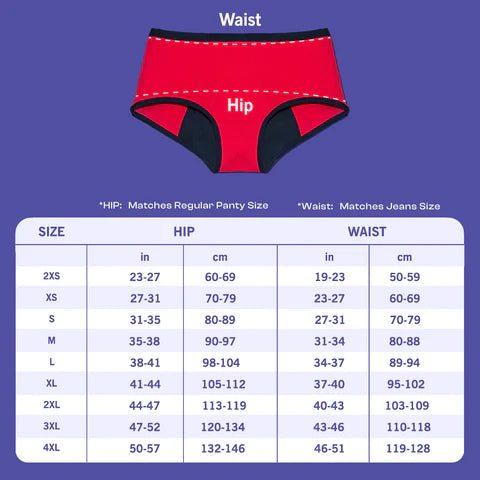I'm sure you all are too familiar with those time of the month related cramps that disrupt even the best laid plans. Aunt-Flo often brings pain that ranges from slight annoyance to total distraction. If you are seeking comfort away from the medicine cabinet, you should consider checking your pantry or kitchen. There is a good chance that curd, often a staple in Indian homes, may help ease your menstrual discomfort and pain. For generations, our mothers and grandmothers have often found some sort of comfort in this everyday item during periods. Let's discuss further how this common dairy helps you in your period cramps during your menstrual days.
Does curd help in period cramps?
When your period strikes, your uterus contracts to shed its lining, causing those familiar cramps. Here's where curd comes into the picture - it's packed with calcium that helps your muscles work better, including those in your uterus. The calcium present in curd acts as your body's natural muscle relaxant.
Curd also has friendly bacteria that can fight inflammation in your body. During your period, inflammation levels often rise, that makes your cramps worse. The good bacteria in curd might help calm this, giving you some much-needed relief.
Also read: Busting myths about eating curd during periods
For generations, our mothers and grandmothers have included curd in their diets during periods. Ayurveda, our ancient medical system, classifies curd as a cooling food that can balance certain bodily energies during menstruation. While modern science is still catching up with what our ancestors already knew, many women have actually expressed that they feel better when they eat curd regularly during their cycle.
Here's you to include Curd in your diet during periods
Adding curd to your period diet is simple! Here are some simple ways to enjoy it:
· Have a small bowl of fresh curd with breakfast.
· Enjoy cooling curd rice during lunch on heavier flow days.
· Whip up a quick cucumber raita to have with dinner.
· Sip on a glass of spiced chaas (buttermilk) in the afternoon.
· Mix curd with a teaspoon of honey for a soothing evening snack.
Also read: Should you drink buttermilk during menstruation?
When should you eat curd?
A lot of women have found that starting curd consumption 2-3 days before their expected period date works best. This gives your body enough time to build up those beneficial bacteria and calcium in the body.
Some women don't like cold curd during your period. But that is not a problem!
Room temperature curd mixed with a pinch of jeera (cumin) or a dash of black salt works wonders. Our bodies often reject very cold foods during periods anyway.
How much should you eat?
A small bowl (about 100-150g) once or twice daily is usually enough. You don't need to go overboard - consistency matters more than quantity.
Why curd is different from other dairy products?
We are sure, you may have this question: "Why curd and not milk or cheese?"
This question may often come in your mind!
Here’s the reason. Curd has gone through fermentation, which creates those good bacteria that milk doesn't have. This fermentation process also breaks down lactose, making curd easier on your tummy than regular milk – super important when your digestion is already sensitive during periods.
The second reason is, the calcium in curd. It is more easily absorbed by your body compared to other dairy products. When you make curd at home (the way our mothers and grandmothers do), it contains diverse bacterial cultures that offer more benefits than store-bought yogurt.

Did you noticed how curd rice is often recommended when you're sick?
That's because curd has natural cooling properties that can help reduce heat and inflammation in your body – including the inflammation that makes your cramps worse during periods.
Another way curd helps you is it doesn't cause bloating for most women, unlike some other dairy products. Since bloating is already a period problem, this makes curd a better choice during your monthly cycle.
A few limitations and things to consider
While curd can be helpful, it's not perfect for everyone. If you're lactose intolerant, even the reduced lactose in curd might trigger digestive issues. Start with a very small amount to see how your body reacts.
Some women notice that dairy products increase their period flow. If you observe this pattern, maybe limit curd to the days just before your period and the lighter flow days.
And if you are someone who feels extremely cold during periods, then consuming room temperature curd with warming spices like ginger, cinnamon, or cardamom might work better for you than cold curd straight from the fridge.
If you have PCOS, endometriosis, or other reproductive health conditions, check with your doctor before making changes to your period management routine.
Also read: Try these Ayurvedic herbs to relieve menstrual pain immediately
Key takeaways
Please understand that curd is not a miracle cure for period cramps, but many women find it helps take the edge off the pain. Its calcium content might help your uterine muscles relax, while its probiotics could fight the inflammation making you miserable.
We've shared ways to include curd in your diet during periods, explained why it might be better than other dairy products, and highlighted important considerations if you're sensitive to dairy. Curd is affordable, easily available, and already part of our Indian food tradition. No need for expensive supplements or complicated preparations - just reach for that bowl of homemade curd.
Have you tried curd for period pain relief? If not, consider giving it a go for a couple of cycles and see if it makes a difference. Let us also know your experiences in the comments section below.



